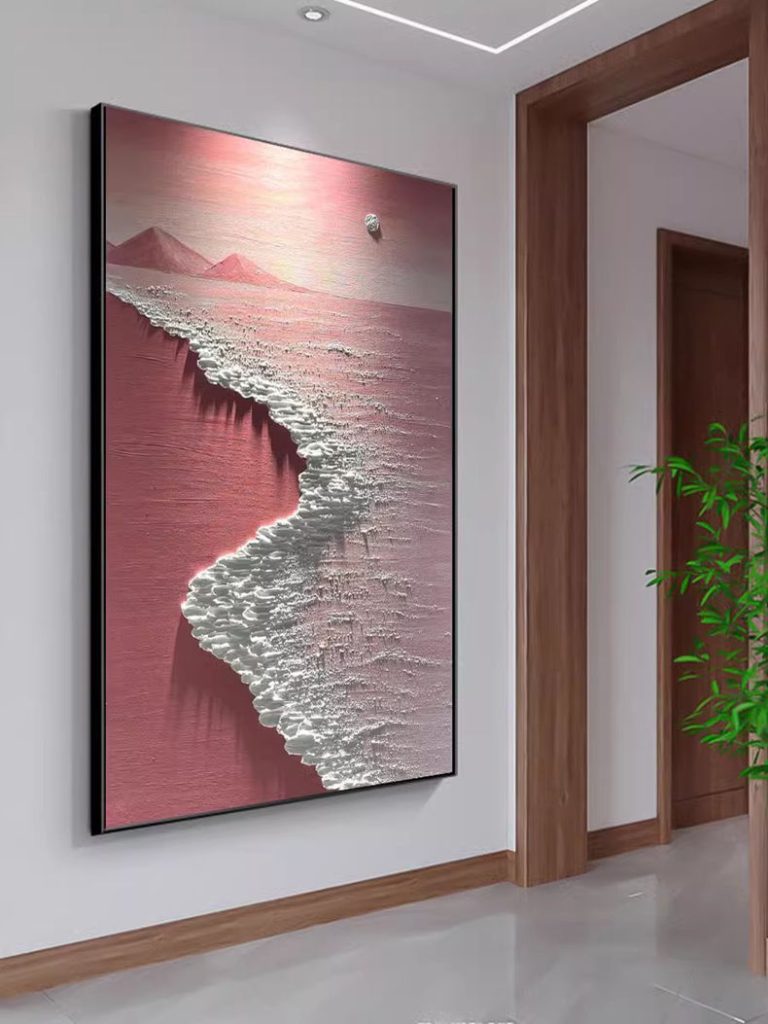There are significant differences between traditional hand-painted oil paintings and modern oil paintings in multiple dimensions. These differences not only reflect the evolution of art history but also reveal the understanding of the essence of art by creators in different eras. The following analysis is carried out from four aspects: core features, techniques, themes and materials:
First, artistic concepts and the core of expression
Traditional hand-painted oil paintings take “reproducing reality” as the core and emphasize the precise depiction of the objective world. For instance, the works of the Renaissance period pursued the sense of reality in three-dimensional space through rigorous perspective and the shaping of light and shadow. Modern oil paintings, on the other hand, turn to “subjective expression”, conveying the artist’s emotions and thoughts through techniques such as exaggeration, deformation and abstraction. For instance, in “The Scream”, the expressionist painter Munch uses distorted lines and colors to express the anxiety and fear in his heart. This transformation reflects the conceptual upgrade of art from “art for art’s sake” to “art for expression’s sake”.
Second, techniques and visual language
Traditional oil painting techniques emphasize “separation of form and color” and “layering and shading”, achieving a profound sense of color by repeatedly covering transparent colors. For instance, Titian in “Venus de Urbino” superimposed multiple layers of transparent colors to give the skin a pearl-like luster. Modern oil painting breaks through traditional techniques and employs destructive methods such as thick coating, scraping, and dripping, and even combines digital technologies (such as projection and laser engraving) for creation. For instance, Pollock’s action paintings directly sprinkle pigments onto the canvas, emphasizing the randomness and dynamic sense of the creative process.
Third, theme and cultural context
The themes of traditional oil paintings often originate from religions, myths or historical events. For instance, Leonardo Da Vinci’s “The Last Supper” is based on a Bible story and conveys the spirit of humanism. Modern oil paintings pay more attention to contemporary social issues, such as technological reflection and criticism of consumer culture. For instance, Andy Warhol’s “Campbell’s Soup Cans” appropriates commercial symbols to deconstruct the significance of popular culture; Zheng Guogu’s “Electronic Ruins” series takes virtual reality as its theme and explores the living conditions in the digital age. This thematic shift reflects the close connection between art and social reality.
Fourth, breakthroughs in materials and media
Traditional oil paintings mainly use linen, oil-based pigments and tinting oils as materials, and the medium is relatively simple. Modern oil paintings boldly introduce non-traditional materials such as acrylic, resin, metal fragments, fabrics, etc., and even combine installation art with painting. For instance, Anselm Kiefer incorporates materials such as lead and ashes into his works, endowing the pictures with a sense of historical weight. David Hockney combines iPad painting with oil painting to explore visual expression in the digital age. This material innovation not only expands the physical boundaries of oil painting, but also enriches its cultural connotations.
Summary of Differences
The differences between traditional hand-painted oil paintings and modern oil paintings are essentially a microcosm of the evolution of art history. The former takes realism as its core and pursues the excellence and eternity of craftsmanship. The latter is guided by concepts, emphasizing experimentation and cross-border integration. This difference is not opposition but an inevitable outcome of the development of art. Whether it is the delicate brushstrokes of traditional oil paintings or the breakthrough expressions of modern oil paintings, they all provide unique aesthetic experiences and ideological inspirations for human civilization.
